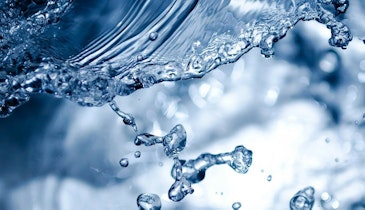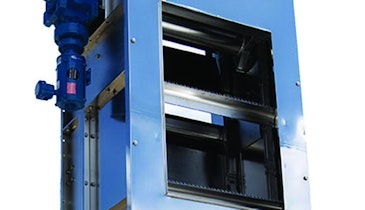Interested in Treatment?
Get Treatment articles, news and videos right in your inbox! Sign up now.
Treatment + Get AlertsNew U.S. air emission regulations have a significant impact on the chemical and refining industry’s wastewater treatment operations. Similar rules apply to pharmaceutical, pulp and paper, and other industrial operations. According to these regulations, wastewater treatment systems at a major emission source must either physically cover the units and vent the off-gases to a control device, or treat the process wastewater to physically remove the emissions compounds. However, these expensive control processes are not required when the operator can demonstrate 95 percent biodegradation of the total mass of Hazardous Air Pollutant emissions.
In addition, operators often face biotreatment capacity limitations. The capacity-limiting factor for conventional air-based aerobic biotreatment of process wastewater is usually the aeration system. Air-based aeration systems generally cannot dissolve more than about 25 percent of the available oxygen into the process wastewater.
Also, although the oxygen demand for biotreatment varies during the day and also from day to day, conventional air-based aeration systems generally offer only limited energy turndown when the oxygen demand is low. Many plants do not take advantage of the limited turndown available because of requirements for mixing, or the costs and problems associated with oxygen monitoring equipment.
Retrofitting existing air-based biotreatment systems with high-purity oxygen and the Praxair In-Situ Oxygenation (I-SOTM) System easily increases the oxygen dissolution capacity by over 100 percent, consequently increasing biotreatment capacity by the same percentage. Further, because the Praxair I-SOTM System dissolves more than 90 percent of the high-purity oxygen into the wastewater, oxygen costs are low. In addition, the Praxair I-SOTM System simultaneously provides excellent solids suspension, reduced foaming and decreased emissions of odors and volatile organic chemicals, with no additional capital expenditure for cover and vent options.
The Praxair I-SOTM System is transportable. Its two major subassemblies are bolted together on site, and the complete assembly is lifted into the tank or lagoon, where it floats. No support structures are needed.
Meeting customer needs
Operators of secondary and advanced wastewater treatment systems currently using air-based diffused or mechanical aeration systems are faced with three general concerns: operating costs, operational flexibility and control of undesirable emissions. The electricity required for the aeration system typically represents a substantial portion of the wastewater plant’s operating cost.
Moreover, the aeration system capacity is often the primary limiting factor determining a treatment plant’s overall capacity. Operational flexibility is limited in mechanical aeration systems by the constraint on the number that must remain in service, and in diffused aeration systems by the minimum flow rate required, for operation to provide sufficient mixing for solids suspension.
Experience from more than 100 installed units has demonstrated that the total power required to operate the Praxair I-SOTM System, including the energy needed to generate oxygen, is as much as 60 percent less than the air system it replaces with no decrease in the wastewater system’s ability to meet its peak oxygen demand requirements. Plants that are located near an oxygen pipeline supply source can actually decrease power consumption by as much as 90 percent.
For biotreatment of process wastewater at a particular industrial plant, Praxair can determine the optimal oxygen supply and dissolution system by use of mathematical modeling, using the plant’s historical data as model inputs. Several case studies demonstrate that the combination of high-efficiency oxygen dissolution and aeration tank “load following” results in the most economical use of power.
Commercial experience
With excellent oxygen transfer and utilization, as well as reduced emissions, the Praxair I-SOTM System is being rapidly accepted for industrial usage. Currently, chemical, pulp and paper, ceramic, tannery, textile and food facilities are successfully using this method to meet their wastewater treatment demands.
To date, over 200 systems have been installed in the U.S., Europe, Latin America and Asia. Units in the U.S. are immediately available that can dissolve up to 240 pounds per hour of oxygen per unit. Oxygen transfer efficiencies are over 90 percent. Biochemical oxygen demand and chemical oxygen demand requirements are achieved with virtually no off-gas and minimal foam generation. The superior oxygen transfer efficiency of the Praxair I-SOTM System has been confirmed in both pilot tests and field-testing.
Manufacturing support
In the U.S. and Canada, Praxair I-SOTM Systems are manufactured exclusively for Praxair by Philadelphia Mixing Solutions, formerly Philadelphia Mixers, a leading manufacturer of mechanical mixing equipment and provider of mixing process and equipment solutions.
Contact Praxair at 800/772-9247 or visit www.praxair.com/wastewater.






